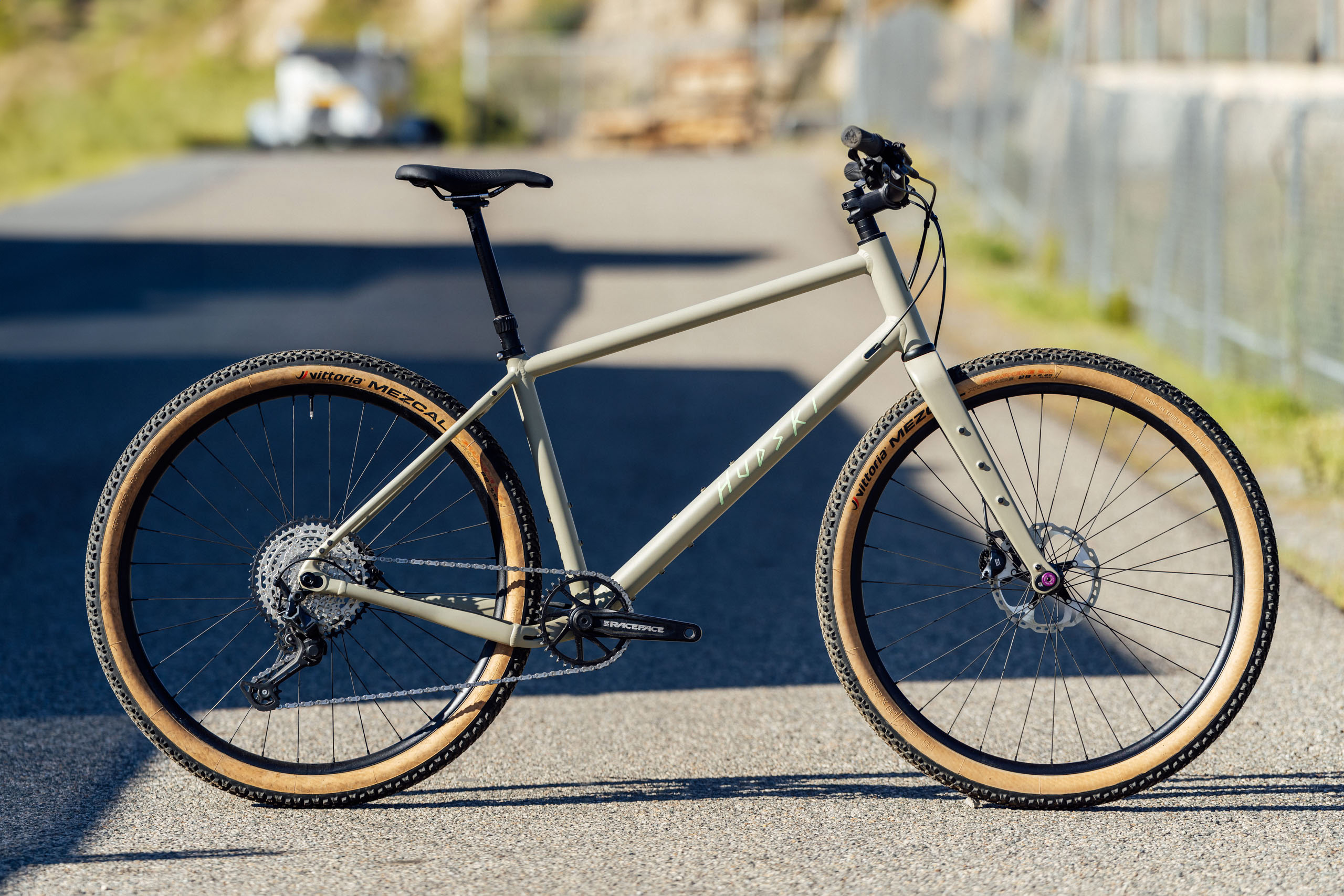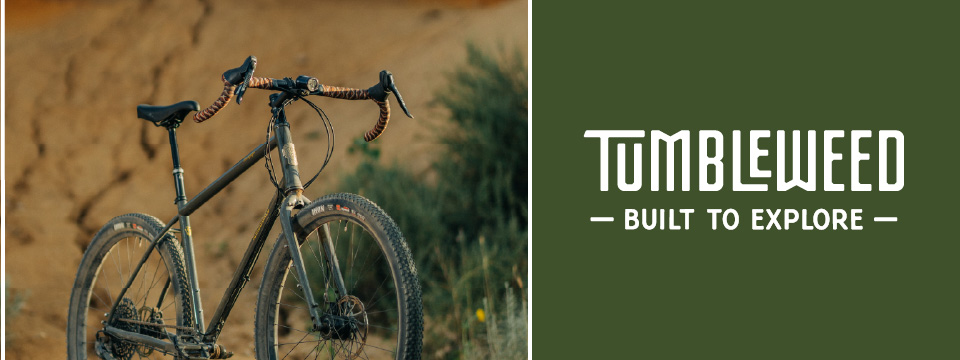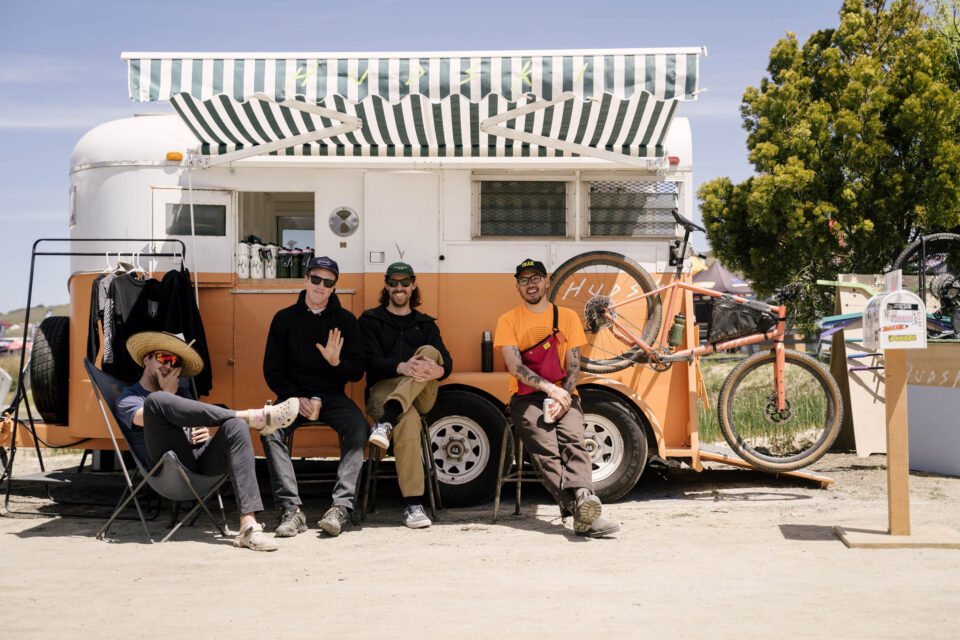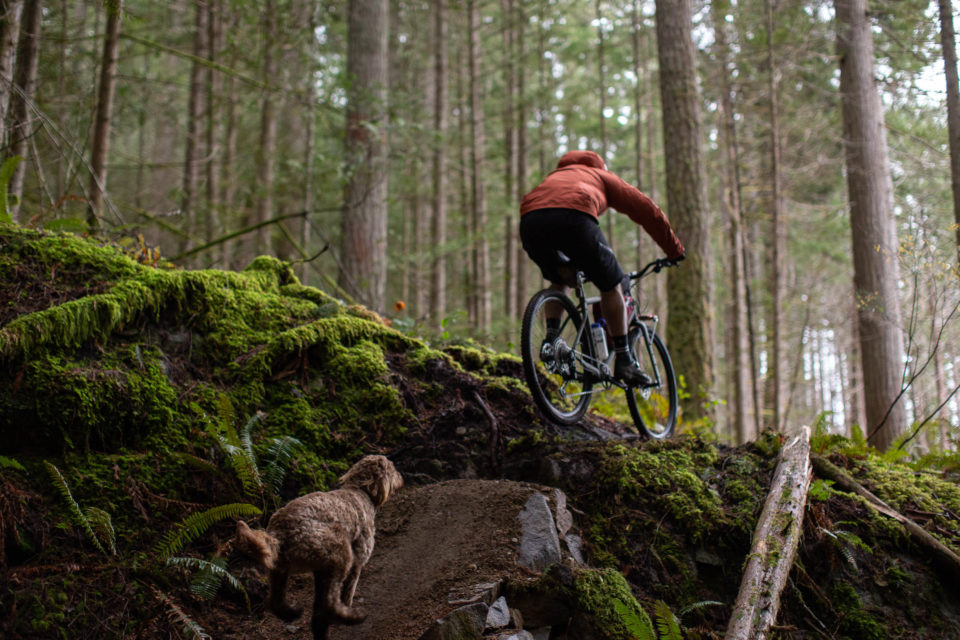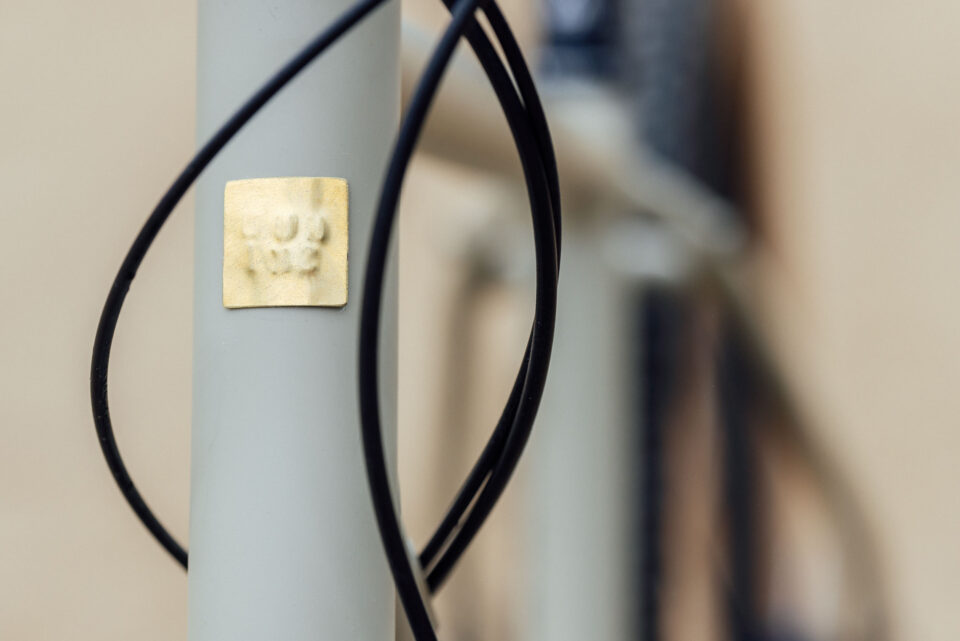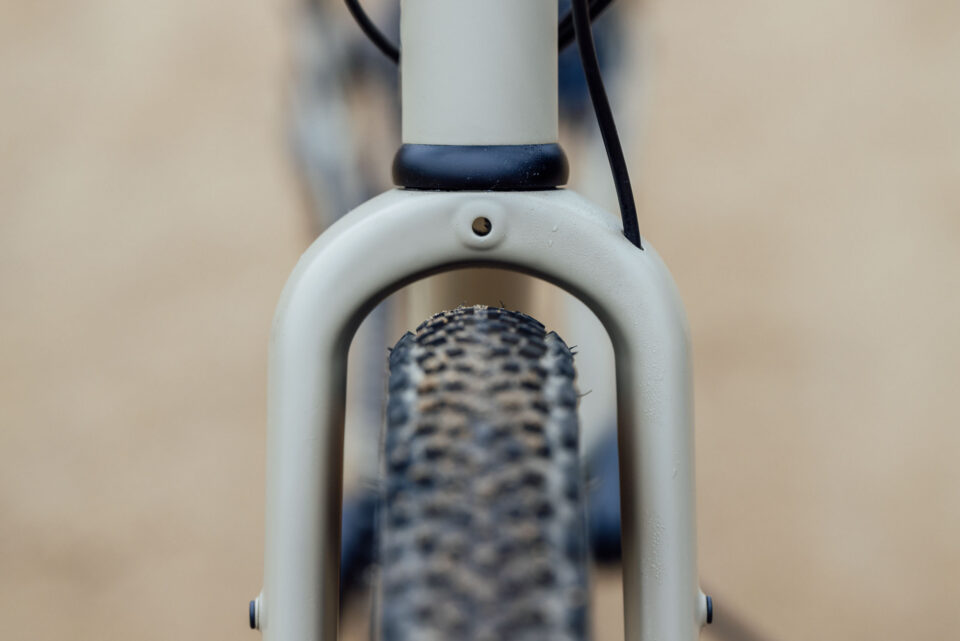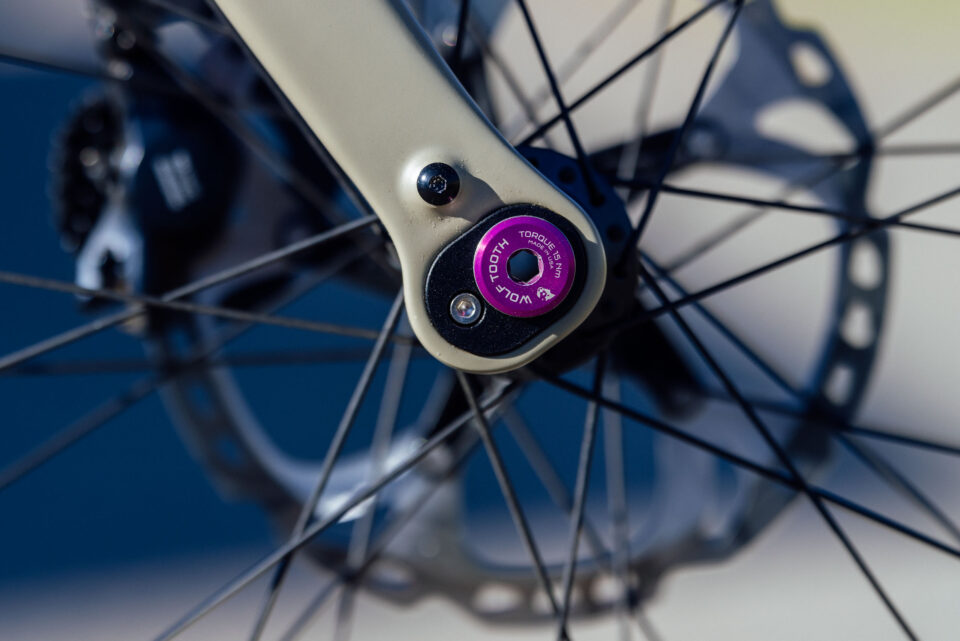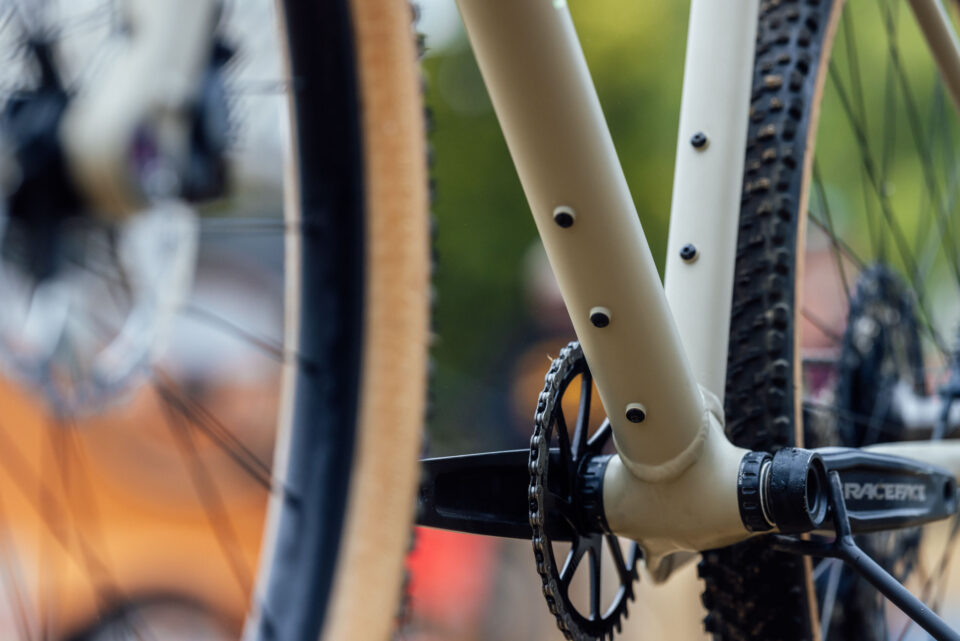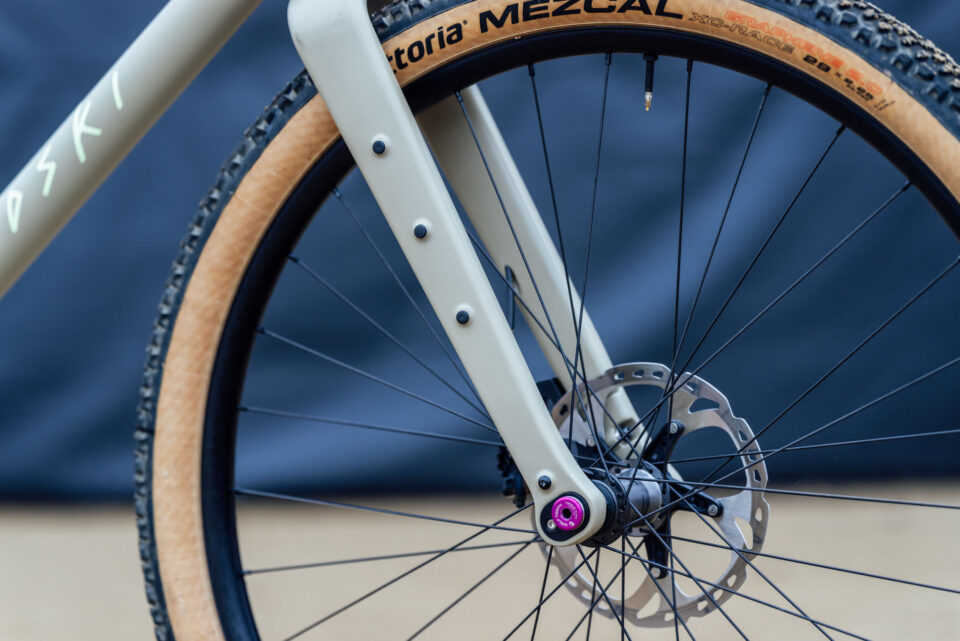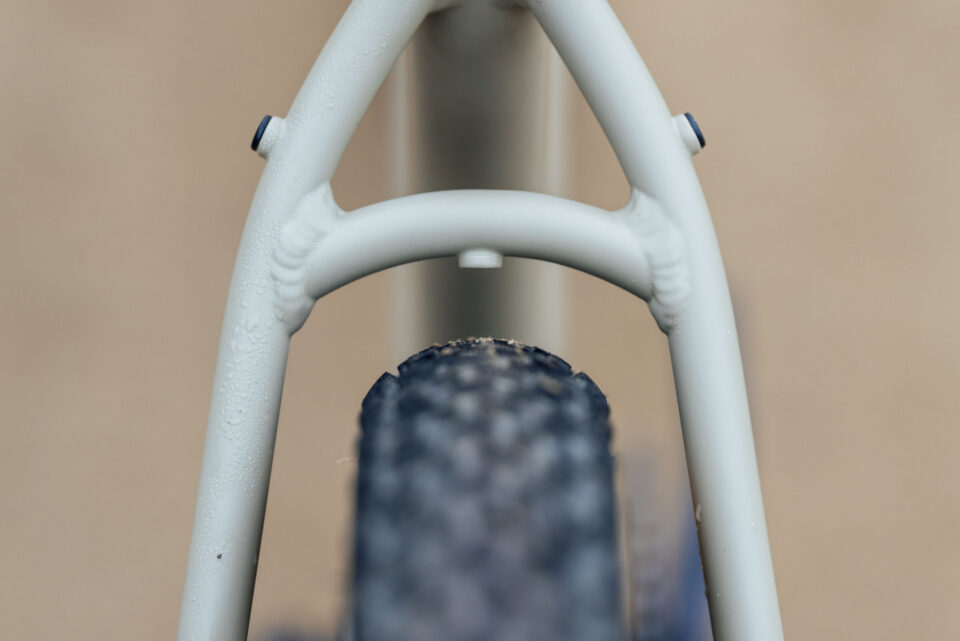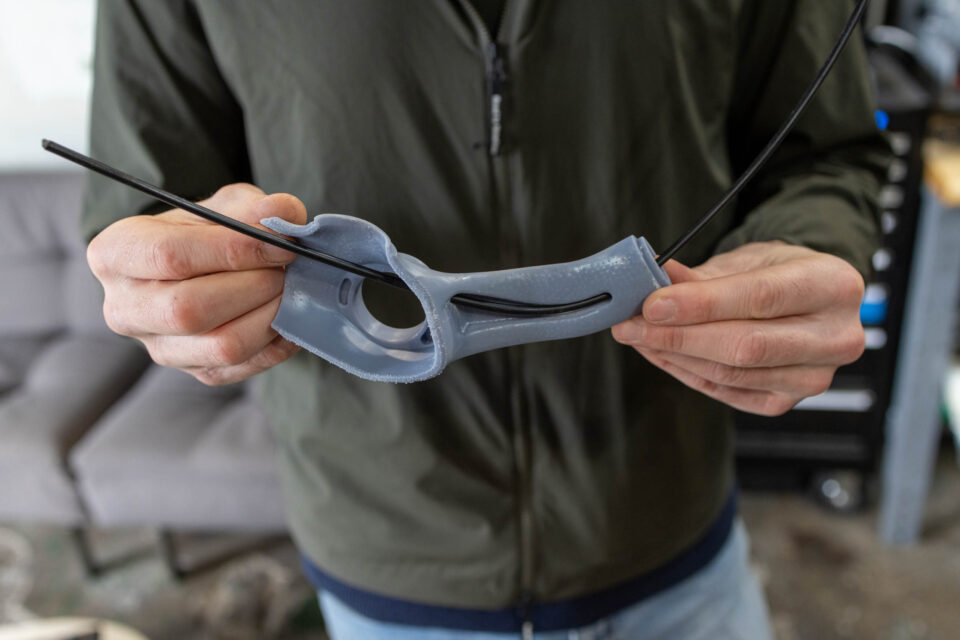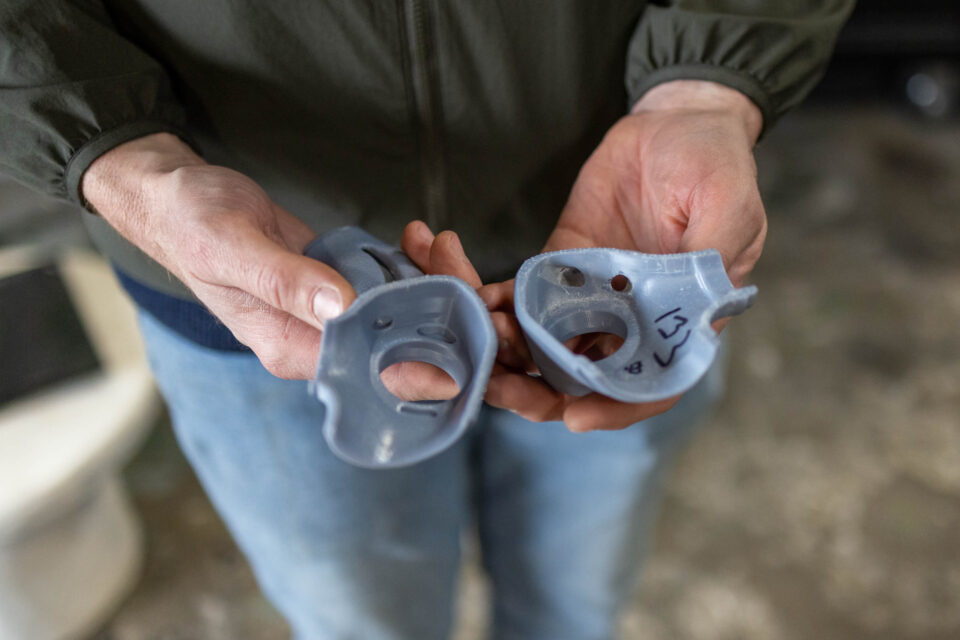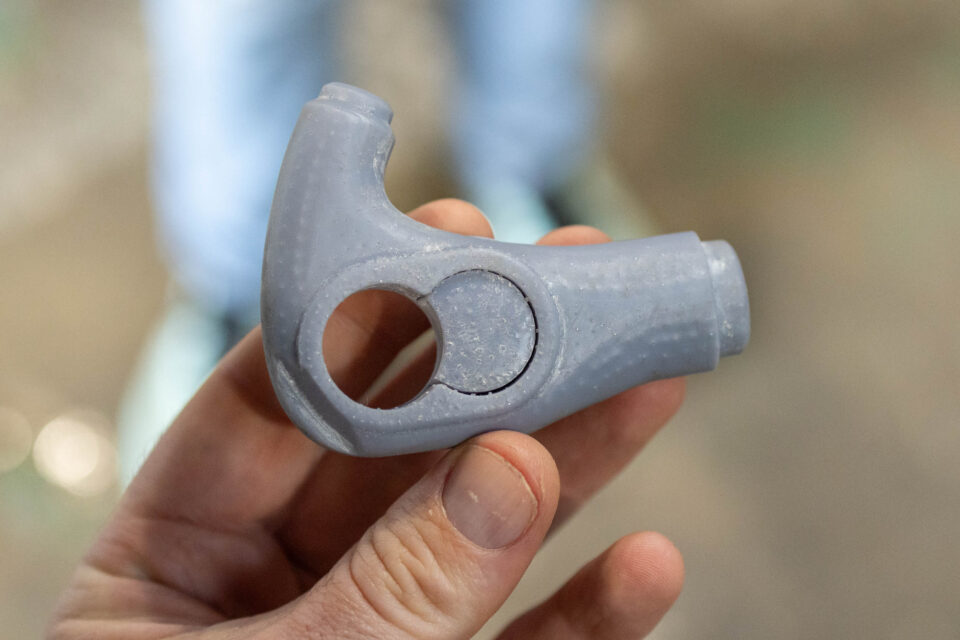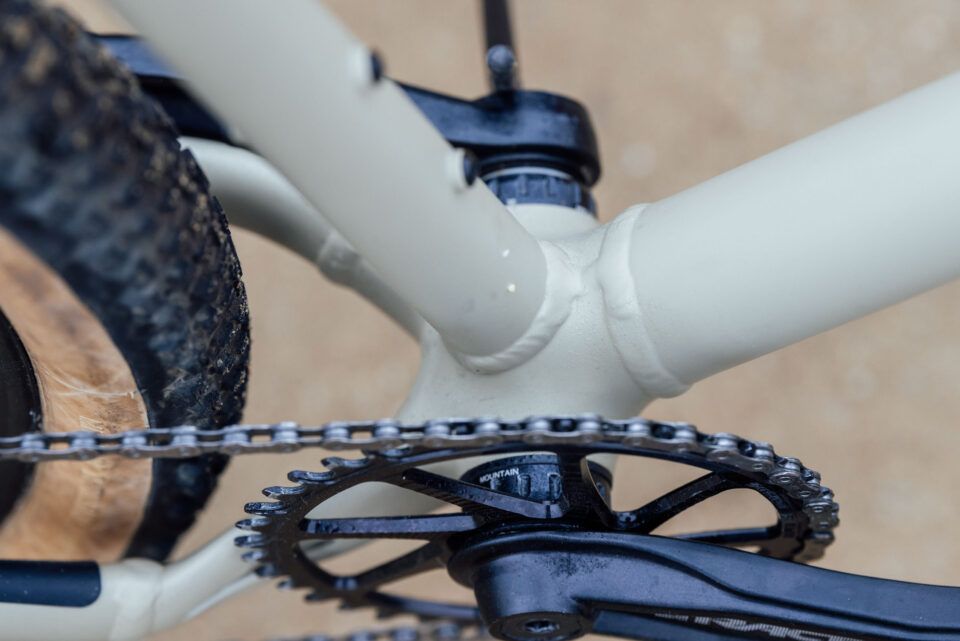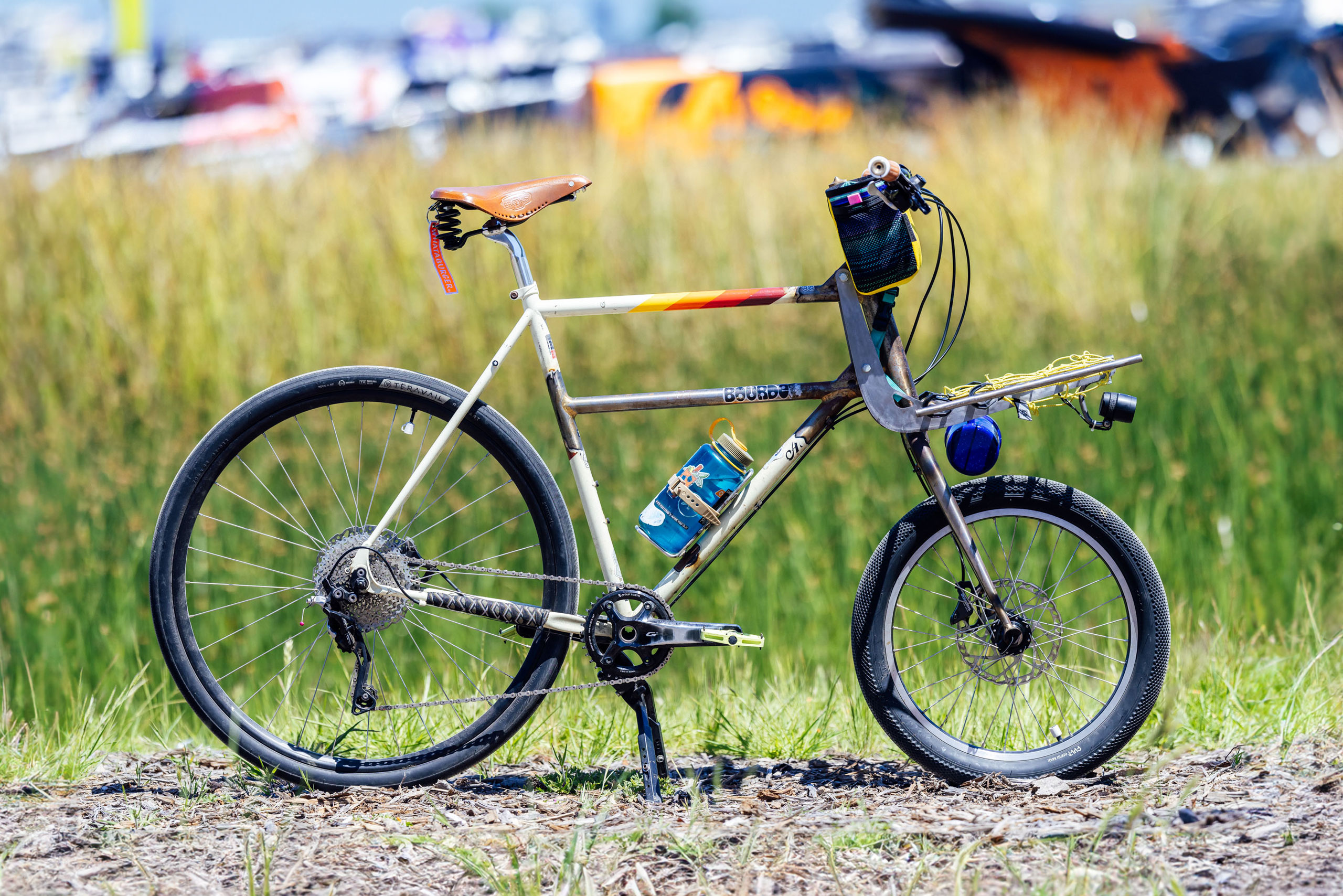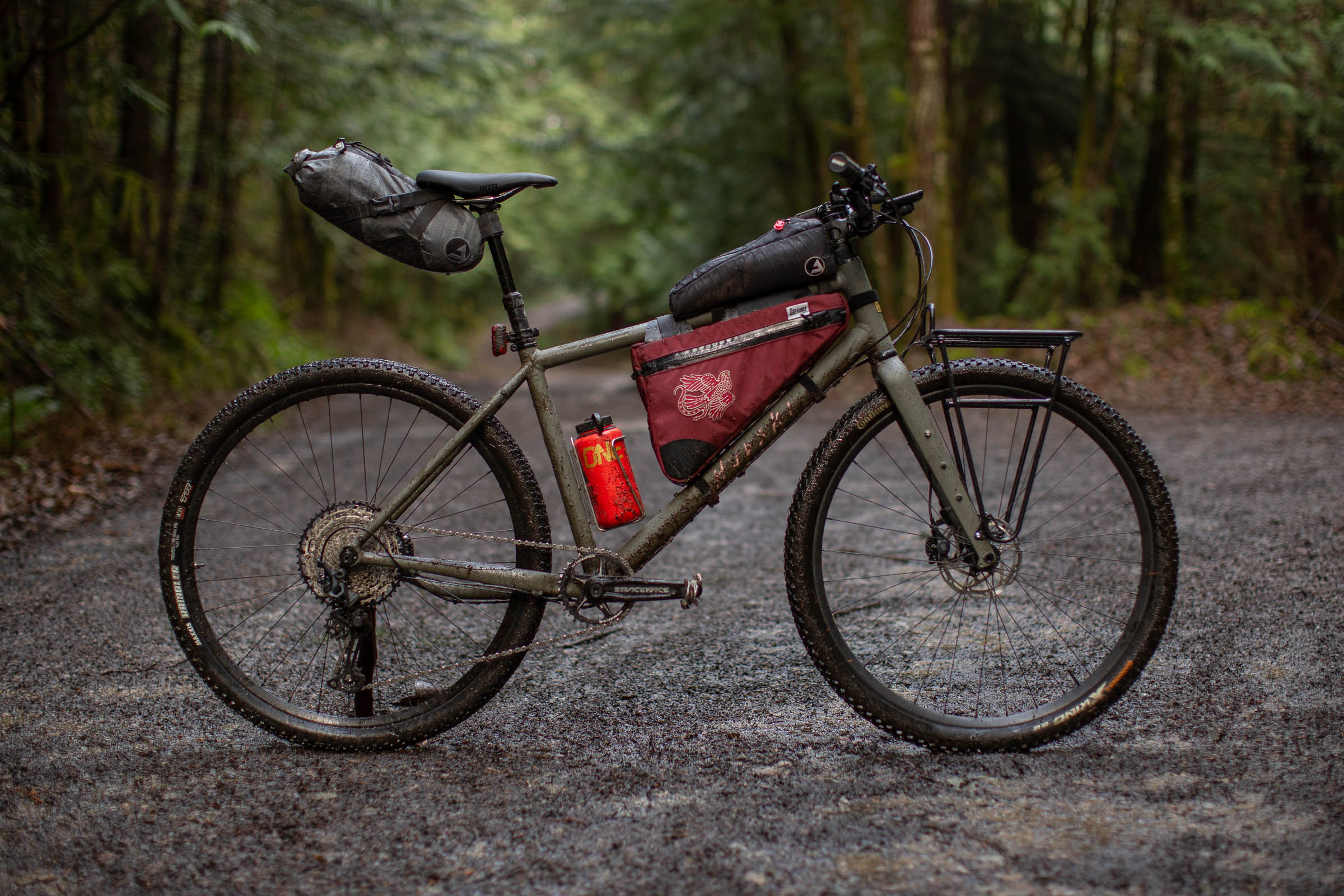Introducing the Hudski Dualist (Sea Otter Classic)
Share This
From the minds and quirky beach trailer of Hudski Bikes comes a brand-new bike that’s an evolutionary sequel to the Doggler. Read on for details about the Hudski Dualist, an interesting, do-it-all aluminum ATB featuring adjustable front/rear axle placement, added tire clearance, and a few clever upgrades to the acclaimed platform…
Brian and Will of Hudski Bikes were high on my list of people to meet during my time at the 2024 Sea Otter Classic. Their quirky beach-trailer booth seemed to be the epicenter of the Sea Otter universe for Evan last year. Plus, Miles had popped by their shop in San Rafael, California, earlier this spring to chat about a new bike that was well in the works, and I wanted to see the final product for myself.
I couldn’t make it over to the Hudski trailer on Thursday, but I went by their place on Friday, which I think might be the best location within the infinitely confusing Sea Otter landscape. As expected, I revisited them several times over the next couple of days to grab some shade, enjoy a cold Modelo, and borrow a Doggler for the ride-to-draw meetup on Saturday. Speaking of, that was my first time on the Doggler. We hit it off immediately, and I was impressed by how well it fit and felt from the get-go. I can see why Miles was so excited about this quirky aluminum ATB. Lucas’s dad even bought one based on the review, and he’s pedaled many thousands of miles on his.

Better yet, the new bike they had out on display featured some major improvements to the platform. Surprisingly, it wasn’t called “the Doggler V2” as I expected it would be. Instead, Hudski decided to let that name live on with the original. The future of the Doggler and what form it will take isn’t entirely clear at the moment, but we’re looking forward to trying out the new Hudski Dualist when it’s available in June or July. In the meantime, read on for the details we know and how the Dualist came to be. First, in a nutshell, here’s what changed during the Doggler-to-Dualist evolution:
- Boost spacing
- UDH dropout for Transmission compatibility
- Changed from flat-mount brakes to post mount (for 160mm rotor; 180 rotor with adapter)
- Increased maximum tire clearance to 29 x 2.4″ or 27.5 x 2.8″ (some larger tire/wheel combos will work too)
- Increased chainring clearance to 38t with a 52mm chain line
- Adjustable rear chainstay length: 435mm or 450mm
- Adjustable fork offset (rake): 44mm or 54mm
- Internal cable routing, improved stealth dropper routing through the BB
- Bottom Bracket is higher (70mm BB drop for all sizes)
Before we can really get to know the Dualist, we have to pay homage to the bike that started it all, the Hudski Doggler. In the fall of 2022, Miles remembers scrolling through Instagram and discovering an eccentric new bike brand founded by childhood friends Will Hudson and Brian Szykowny. Hudski had quietly tip-toed its way into the alt mountain bike, gravel, and commuter scene with a single do-everything bike model, the Doggler.
The original Hudski Doggler was available in three iterations, each using the same aluminum frame and carbon fork: the Doggler City, Doggler Gravel, and Doggler Mountain. Unlike your average hybrid bike, the Doggler was positioned as a high-performance rigid ATB based around durable mountain bike components, a dropper post, wide and comfortable handlebars, and clearance for 29 x 2.1″ and 27.5 x 2.6″ tires. The only specs that changed between the three builds were the tires and handlebar shape. The best part? All builds were originally priced at just $2,000 USD.
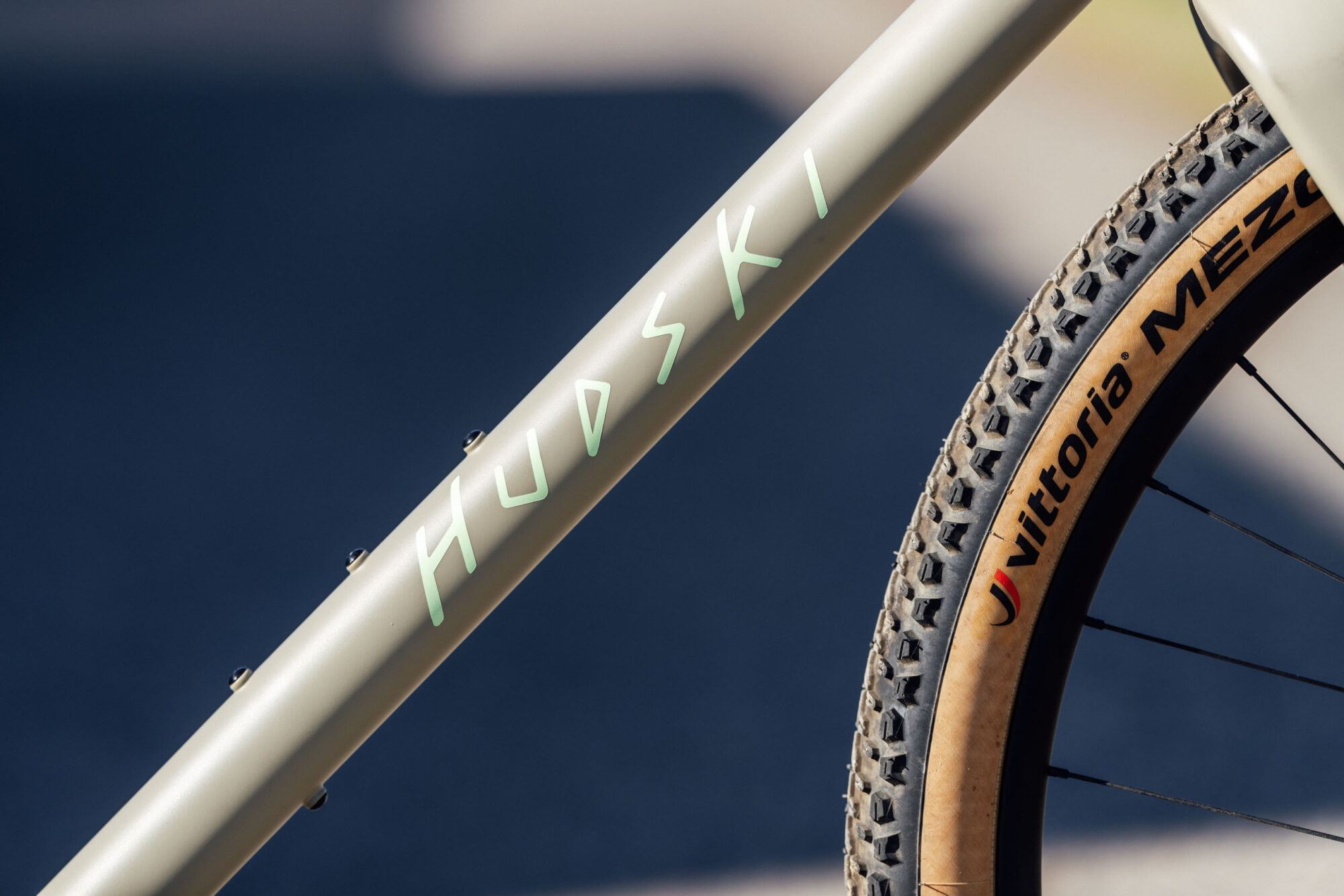
Miles was quickly sold on the idea of the Hudski Doggler as a do-everything ATB. He published the first in-depth Doggler review four months later, and it ended up being one of our most popular articles of the year. To summarize that review, the Doggler was lightweight, versatile, and rolled a lot of value into a well-conceived package. He liked it so much that he ended up buying the review bike, which is a top accolade in the bike media world.
However, as always, there was room for improvement. Finding the ideal wheels—non-Boost with a Microspline freehub and 30mm internal width—was nearly impossible at the time, and the mix of flat-mount and post-mount hydraulic brakes was an awkward combination. Of course, Hudski has made a few small changes to the Doggler over the last couple of years, including a lower bottom bracket and a slacker head tube angle, but otherwise, the Doggler has always been a high-speed sport utility tourer that has the ability to serve a multitude of use cases.

At first glance, you might think the Doggler and Dualist look exactly the same. That’s partly true, but the the new Hudksi Dualist offers everything we liked about the Doggler with a few much-needed updates. The Dualist is the same do-mostly-everything gravel/rigid mountain bike, but as outlined above, there are a few big updates under the hood to increase its overall versatility. To start, the Hudksi Dualist now uses boost hub spacing and post-mount brakes, which will make it much easier to use most mainstream mountain bike wheels and brakes.
Perhaps the most interesting features on the Dualist are what inspired the bike’s name. It gets a completely redesigned carbon fork with a flip-chip dropout. Riders will be able to alternate between a 54mm or 44mm offset for slightly more agile handling or increased stability or for different styles of loading. Hudski also developed a reversible rear dropout that provides two chainstay length options (435mm or 450mm), which will also tweak the bike’s handling characteristics. Run it in the shorter position for zippy, high-speed gravel rides and trails, or lengthen the rear end for long hauls and loaded bikepacking. In the long chainstay position, the Dualist can clear 29 x 2.5″ or 27.5 x 2.8″ tires, but it maxes out a 29 x 2.4″ in the short position.
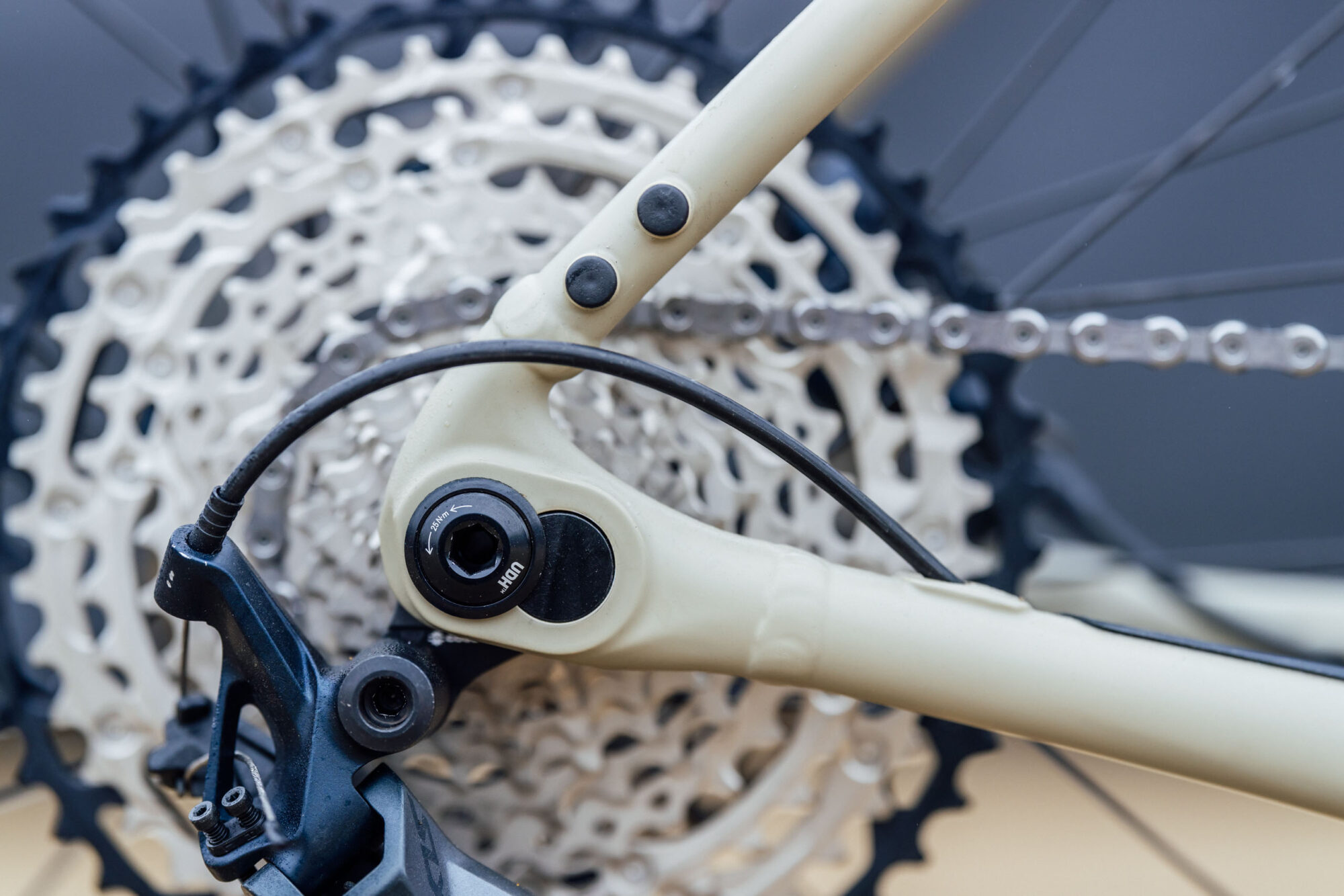
The Dualist now features fully internal cable routing, made possible via a custom-forged bottom bracket shell. In short, the bottom bracket, main tube joints, and yoke are all one hollow part. This helped with cable routing and increased tire and chainring clearance. A few months back, Miles was able to get a sneak peek at the Dualist at Hudski headquarters. They showed off a 3D-printed prototype of the clamshell-style bottom bracket shell and the rear dropouts, which helped them dial in the final design of the Dualist.

For the record, there were a few other names tossed around before Hudski landed on Dualist. Those include Rizzard, TerraDynamica, Lasso, and the second runner up, Graveler King Charles Spaniel, but we agree that Dualist seems fitting for this bike. It represents the dualism between gravel bikes and mountain bikes, but rather than being divided, as dualism often means, it represents a symbiotic relationship between the two. We look forward to hearing more about the Dualist in the months to come. Stay tuned!

Further Reading
Make sure to dig into these related articles for more info...
Please keep the conversation civil, constructive, and inclusive, or your comment will be removed.






